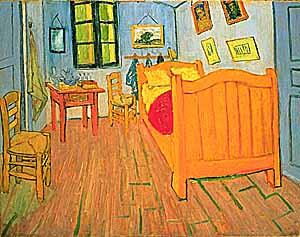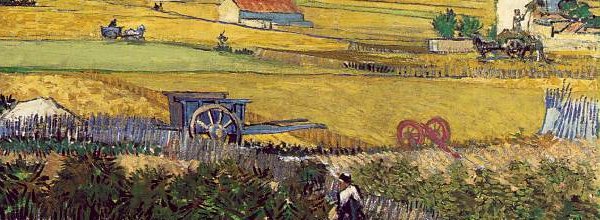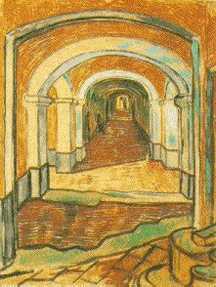Vincent Willem van Gogh was a Dutch post Early in life he displayed a moody, restless temperament that was to thwart his every pursuit. By the age of 27 he had been in turn a salesman in an art gallery, a French tutor, a theological student, and an evangelist among the miners at Wasmes in Belgium. His experiences as a preacher are reflected in his first paintings of peasants and potato diggers; of these early works, the best known is the rough, earthy Potato Eaters (1885, Van Gogh Museum, Am |  | |
 |
In 1886 van Gogh went to Paris to live with his brother Théo van Gogh, an art dealer, and became familiar with the new art movements developing at the time. Influenced by the work of the impressionists and by the work of such Japanese printmakers as Hiroshige and Hokusai, van Gogh began to experiment with current techniques. Subsequently, he adopted the brilliant hues found in the paintings of the French artists Camille Pissarro and Georges Seurat. |
 |
 | In 1888 van Gogh left Paris for southern France, where, under the burning sun of Provence, he painted scenes of the fields, cypress trees, peasants, and rustic life characteristic of the region. During this period, living at Arles, he began to use the swirling brush strokes and intense yellows, greens, and blues associated with such typical works as Bedroom at Arles (1888, Van Gogh Museum, Amsterdam), and Starry Night (1889, Museum of Modern Art, New York City). | |
For van Gogh all visible phenomena, whether he painted or drew them, seemed to be endowed with a physical and spiritual vitality. In his enthusiasm he induced the painter Paul Gauguin, whom he had met earlier in Paris, to join him. After less than two months they began to have violent disagreements, culminating in a quarrel in which van Gogh wildly threatened Gauguin with a razor; the same night, in deep remorse, van Gogh cut off part of his own ear. The more than 700 letters that van Gogh wrote to his brother Théo (published in 1911) constitute a remarkably illuminating record of the life of an artist and a thorough documentation of his unusually fertile output—about 750 paintings and 1600 drawings. |  | |
 |
In 1973 the Vincent van Gogh Museum, |
| Make a bookmark Come again |
||||||||||||
| Menu | ||||||||||||